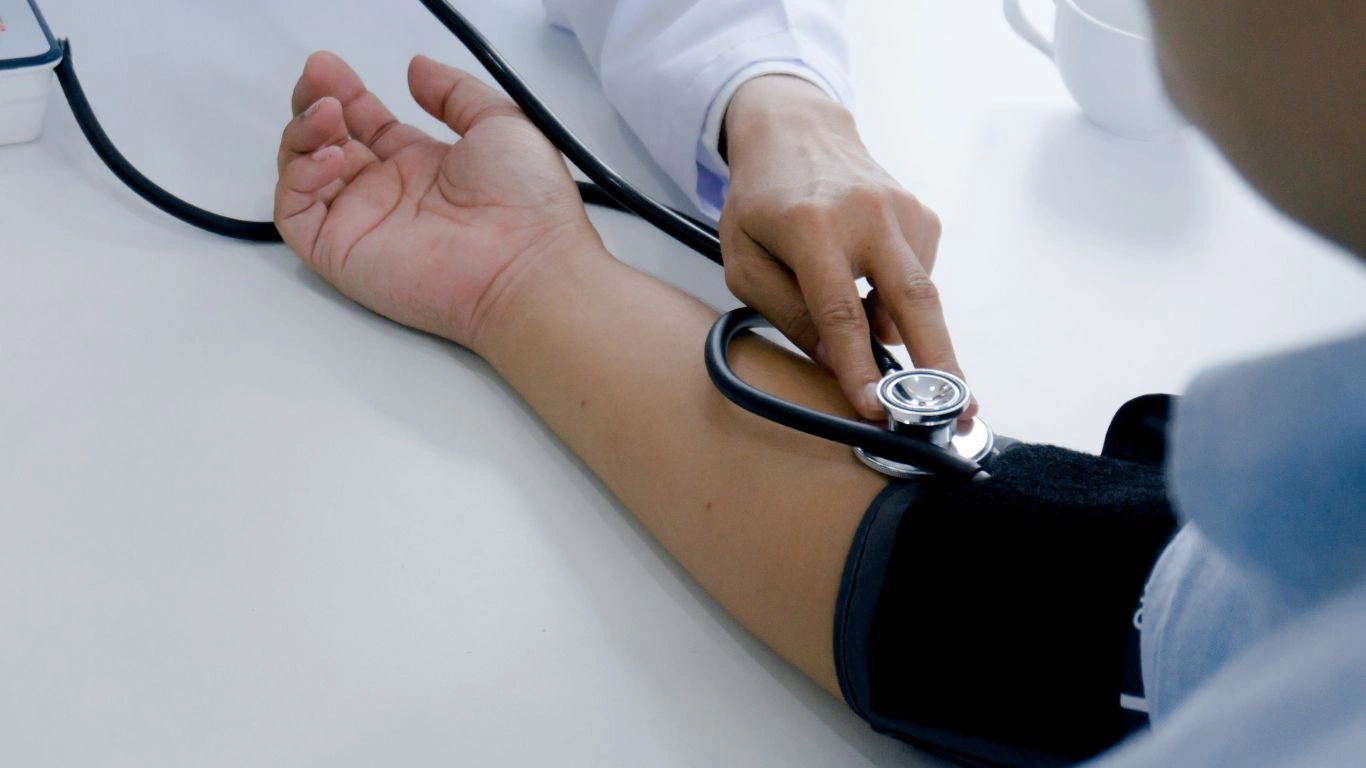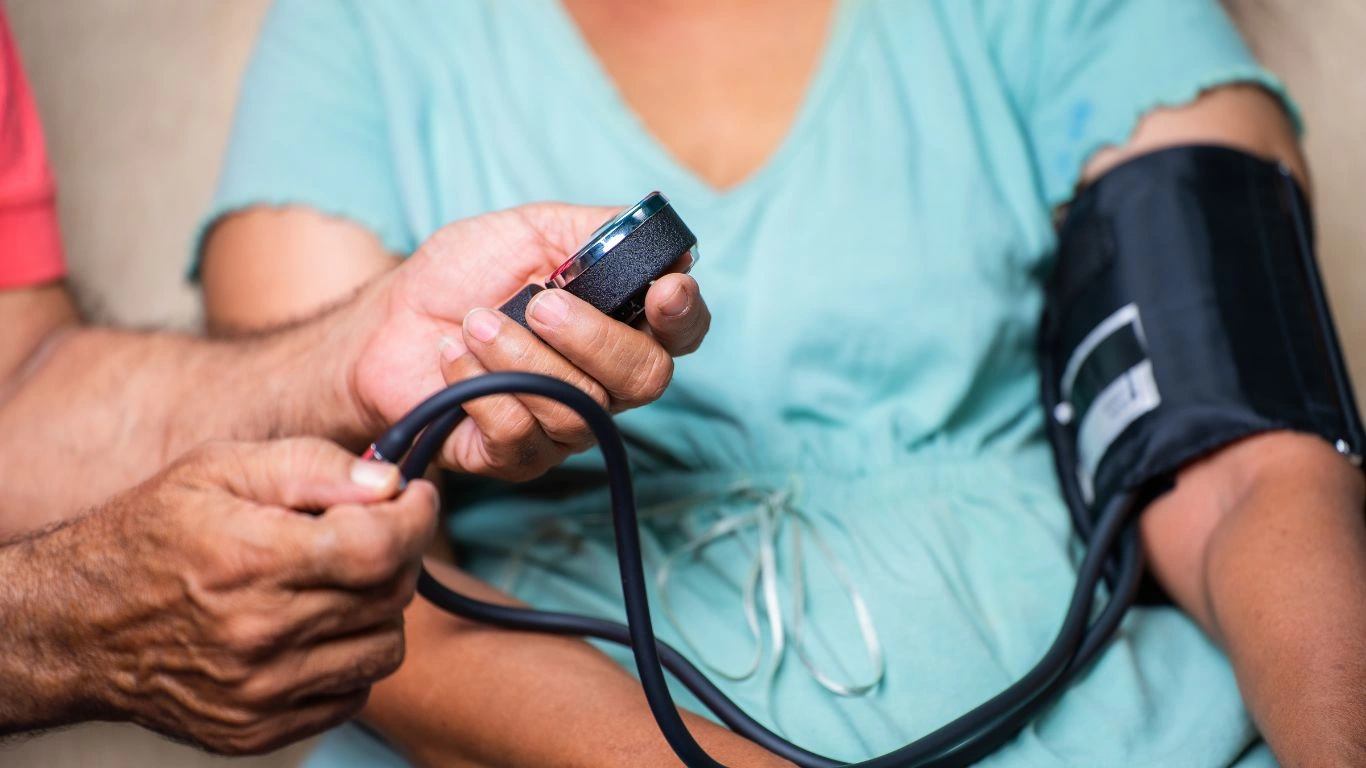How Hyperinsulinemia Impacts Hypertension: Key Risks & Prevention
As a Hypertension expert, I’ve seen countless patients struggling with high blood pressure. One of the more complex connections I’ve discovered over the years is how hyperinsulinemia impacts hypertension. If you’ve never heard of hyperinsulinemia, you’re not alone—many people aren’t familiar with this condition, even though it plays a significant role in cardiovascular health. Essentially, hyperinsulinemia refers to a state where there’s an excess of insulin circulating in the bloodstream, often as a result of insulin resistance. What’s interesting—and a little scary—is that this excess insulin can contribute to the development or worsening of high blood pressure. In this blog, we’re going to explore this relationship in detail, breaking it down so you can understand exactly how this phenomenon affects your health and what you can do about it.
What is Hyperinsulinemia?
Before diving into how hyperinsulinemia impacts hypertension, it’s important to first understand what hyperinsulinemia is and how it develops. Hyperinsulinemia occurs when the body produces too much insulin, often as a result of insulin resistance. This happens when the body’s cells become less responsive to insulin, a hormone that helps regulate blood sugar levels. In response, the pancreas produces even more insulin in an attempt to compensate for the body’s resistance. Over time, this can lead to an excess of insulin in the blood.
Hyperinsulinemia often occurs in individuals with obesity, metabolic syndrome, or prediabetes, but it’s also closely associated with type 2 diabetes. It’s important to note that hyperinsulinemia can exist without overt diabetes—meaning people with high insulin levels might not necessarily have diabetes but could still be at risk for other complications, including high blood pressure.
How Hyperinsulinemia Develops
The process begins when insulin resistance develops. Normally, insulin helps glucose enter your cells, where it can be used for energy. But when cells stop responding to insulin properly, glucose doesn’t get absorbed efficiently, and your blood sugar levels remain high. The pancreas, sensing this, pumps out more insulin in an attempt to bring blood sugar down. Over time, this excessive insulin production leads to hyperinsulinemia.
Now, you might be thinking, “Okay, so it’s just about blood sugar, right?” Well, not quite. Insulin does a lot more than regulate glucose—it also plays a role in various other processes within the body, including the regulation of blood pressure. That’s where the connection between hyperinsulinemia and hypertension comes into play.
How Hyperinsulinemia Impacts Hypertension

Now, here’s the million-dollar question: how does hyperinsulinemia impact hypertension, or high blood pressure? Well, as I’ve seen in my practice, the excess insulin circulating in the bloodstream can have several effects on the body, some of which directly contribute to the development of high blood pressure.
1. Insulin and Sodium Retention
One of the primary ways hyperinsulinemia can raise blood pressure is through its effect on sodium retention. Insulin has been shown to stimulate the kidneys to retain sodium, which leads to increased fluid volume in the bloodstream. When there’s more fluid in the blood vessels, it increases the pressure exerted on the blood vessel walls—resulting in higher blood pressure. This is one of the key ways that excess insulin can directly contribute to hypertension.
2. Insulin’s Effect on Blood Vessels
Hyperinsulinemia can also affect the structure and function of your blood vessels. Research has shown that excess insulin can cause the smooth muscle cells in the walls of blood vessels to grow and become thicker. This can lead to a narrowing of the arteries, making it harder for blood to flow freely. The result? Increased pressure in your arteries, which contributes to high blood pressure. Additionally, hyperinsulinemia can impair the ability of blood vessels to dilate, or open up, when necessary, further contributing to high blood pressure.
3. Impact on Sympathetic Nervous System
The sympathetic nervous system, also known as the “fight or flight” system, plays a role in regulating blood pressure. Hyperinsulinemia has been shown to activate this system, leading to increased levels of certain hormones like norepinephrine, which constrict blood vessels and raise blood pressure. In other words, when insulin levels are too high, they can trigger your body’s stress response, ultimately causing an increase in blood pressure.
The Role of Obesity and Metabolic Syndrome

It’s also important to recognize the role that obesity and metabolic syndrome play in the development of hyperinsulinemia and, by extension, hypertension. As I mentioned earlier, excess body fat—especially visceral fat, which surrounds internal organs—is a major contributor to insulin resistance. When the body becomes resistant to insulin, the pancreas compensates by producing more insulin. This cycle leads to hyperinsulinemia.
Visceral fat not only contributes to insulin resistance but also releases inflammatory markers and hormones that exacerbate the situation. These factors combine to create a perfect storm for developing both high blood pressure and other cardiovascular problems. This is why it’s so important to manage weight and prevent obesity, as it’s a key factor in reducing the risk of both hyperinsulinemia and hypertension.
4. The Vicious Cycle: Hyperinsulinemia, Hypertension, and Weight Gain
Once hyperinsulinemia and hypertension are both present, they can create a vicious cycle. High blood pressure can further damage the blood vessels, leading to an increased risk of heart disease and stroke. Additionally, the stress from managing both conditions can lead to weight gain, which can make both hyperinsulinemia and hypertension even worse. It’s a tough situation to break free from, but understanding how these conditions interact is the first step in managing them effectively.
The Takeaway
In summary, hyperinsulinemia has a profound impact on hypertension through multiple mechanisms, including sodium retention, changes to blood vessels, and the activation of the sympathetic nervous system. Understanding this connection is crucial, especially for those struggling with obesity, metabolic syndrome, or prediabetes. If you’re dealing with high blood pressure and think you might have hyperinsulinemia, it’s essential to work with your healthcare provider to manage both conditions effectively. Early intervention and lifestyle changes can go a long way in breaking the cycle and improving overall health.

How Hyperinsulinemia and Hypertension Affect Your Heart Health

As we dive deeper into the relationship between hyperinsulinemia and hypertension, it’s crucial to understand how these two conditions don’t just affect your blood pressure, but also your heart health. You may have heard that high blood pressure is often referred to as the “silent killer” because it can go unnoticed until it causes significant damage. When hyperinsulinemia is in the mix, the risks to your cardiovascular system only intensify.
Increased Risk of Heart Disease
The combination of hyperinsulinemia and hypertension creates a double whammy for the heart. As I’ve seen in my clinical practice, over time, the constant high blood pressure puts pressure on the walls of your arteries, leading to a condition known as arteriosclerosis, or the hardening of the arteries. This narrowing of the arteries makes it more difficult for blood to flow, forcing the heart to work harder to pump blood. When this happens, your heart is at greater risk for several issues, including heart attacks, heart failure, and stroke.
But that’s not all. The excess insulin in your blood can also trigger inflammation in the blood vessels, which further damages the arteries and increases your risk of plaque buildup. Plaque, made up of fatty deposits, can clog arteries, leading to further narrowing and even blockages. When you add high blood pressure into the mix, it becomes a recipe for serious heart problems.
The Impact on the Endothelial Function
Another critical aspect of how hyperinsulinemia affects heart health is its role in endothelial dysfunction. The endothelium is the thin layer of cells that lines the blood vessels. It’s responsible for regulating blood flow, preventing blood clotting, and keeping blood vessels flexible. When hyperinsulinemia is present, insulin can damage the endothelial cells, making it harder for blood vessels to relax and dilate properly. This, in turn, contributes to high blood pressure and puts extra strain on the heart.
In my experience, many patients with hyperinsulinemia also have poor endothelial function, which makes it even harder for them to manage both their blood pressure and their heart health. It’s like a vicious cycle—poor endothelial function leads to higher blood pressure, and higher blood pressure leads to even more damage to the endothelium.
The Connection Between Insulin Resistance and Arterial Stiffness

Now, let’s take a closer look at one of the most concerning long-term effects of hyperinsulinemia: arterial stiffness. Insulin resistance is at the heart of both hyperinsulinemia and hypertension. The more insulin your pancreas has to produce to compensate for insulin resistance, the more it contributes to arterial stiffness.
Arterial stiffness occurs when the blood vessels lose their ability to expand and contract as they should. This stiffness prevents blood from flowing freely and leads to higher blood pressure. Over time, this can cause significant damage to your cardiovascular system, including an increased risk of heart disease, kidney disease, and stroke. In fact, some studies have shown that people with both insulin resistance and high blood pressure have a much higher likelihood of developing these severe complications. And the worst part? Arterial stiffness can often go unnoticed until it’s too late.
What’s key to understand here is that insulin resistance and hypertension often go hand-in-hand. They’re both part of the same metabolic dysfunction. When insulin resistance is left untreated, it leads to higher blood sugar levels, which causes the body to produce even more insulin, perpetuating the cycle. At the same time, high blood pressure continues to strain the arteries, making them stiffer and less flexible, which just exacerbates the problem.
The Role of Inflammation in Cardiovascular Risk
Inflammation plays a significant role in both hyperinsulinemia and hypertension. In fact, it’s one of the reasons these two conditions are so interconnected. Insulin resistance and hyperinsulinemia promote inflammation throughout the body, particularly in the blood vessels. Chronic inflammation can damage the walls of your arteries, making them more susceptible to atherosclerosis, a condition where plaque builds up in the arteries and restricts blood flow.
In my experience, I’ve seen how managing inflammation is crucial when treating patients with both hypertension and hyperinsulinemia. Reducing inflammation can help slow the progression of both conditions and significantly reduce the risk of heart disease. This is why it’s so important to focus on lifestyle factors like diet, exercise, and stress management, as they are key to reducing inflammation in the body.
How Lifestyle Changes Can Break the Cycle of Hyperinsulinemia and Hypertension

The good news is that you don’t have to accept hyperinsulinemia and hypertension as inevitable. There are plenty of things you can do to break the cycle and improve both your blood pressure and insulin sensitivity. In my practice, I’ve seen time and time again how simple lifestyle changes can make a profound difference. Here’s how:
1. Dietary Adjustments
One of the most powerful tools in managing both hyperinsulinemia and hypertension is a healthy diet. Focus on eating a balanced diet that’s rich in whole foods, including plenty of vegetables, lean proteins, and healthy fats. Reducing your intake of refined carbohydrates, processed foods, and sugars can help lower insulin levels and improve insulin sensitivity. For example, incorporating more fiber-rich foods, like beans, leafy greens, and whole grains, can help regulate blood sugar and blood pressure.
Additionally, I recommend reducing your sodium intake, as too much sodium can exacerbate high blood pressure. Instead, try using herbs and spices to flavor your food. Omega-3 fatty acids, found in foods like fatty fish (salmon, mackerel), flax seeds, and walnuts, are also known to help reduce inflammation and improve heart health.
2. Regular Exercise
Exercise is another key factor in managing hyperinsulinemia and hypertension. Regular physical activity can help lower insulin levels, improve blood sugar control, and reduce blood pressure. It doesn’t have to be intense exercise—walking, swimming, or cycling are all excellent ways to get moving and improve your cardiovascular health. Aim for at least 30 minutes of moderate exercise most days of the week.
3. Stress Management
Chronic stress can have a serious impact on both insulin resistance and high blood pressure. Stress activates the sympathetic nervous system, which can raise blood pressure and increase insulin production. Incorporating stress-reducing activities like meditation, deep breathing exercises, or yoga into your routine can help lower both your blood pressure and insulin levels.
By making these lifestyle changes, you can significantly reduce the impact of hyperinsulinemia and hypertension on your health and potentially prevent more serious complications down the line.
Medication Options for Managing Hyperinsulinemia and Hypertension

While lifestyle changes like diet, exercise, and stress management are crucial in managing both hyperinsulinemia and hypertension, I know that sometimes, medications are necessary. Many of my patients come to me feeling frustrated because they’ve tried diet and exercise, but their blood pressure or insulin resistance still isn’t under control. Fortunately, there are various medications available that can help manage these conditions effectively. In this section, we’ll discuss some common options for both hyperinsulinemia and hypertension, as well as how they work together to improve your overall health.
1. Medications for Hyperinsulinemia
When it comes to hyperinsulinemia, the goal is to reduce insulin levels and improve insulin sensitivity. There are several types of medications that can help achieve this:
- Metformin: This is one of the most commonly prescribed medications for patients with insulin resistance and prediabetes. Metformin works by decreasing the amount of glucose produced by the liver and increasing the sensitivity of muscle cells to insulin. This helps to lower insulin levels and regulate blood sugar, which, in turn, can help manage hyperinsulinemia.
- SGLT2 Inhibitors: Medications like canagliflozin (Invokana) and empagliflozin (Jardiance) help reduce blood sugar levels by blocking the reabsorption of glucose in the kidneys, allowing it to be excreted through urine. These drugs also have the added benefit of reducing blood pressure, which is helpful for individuals dealing with both hyperinsulinemia and hypertension.
- Thiazolidinediones (TZDs): Medications like pioglitazone (Actos) improve insulin sensitivity by increasing the effectiveness of insulin in the body’s cells. While these drugs can help with insulin resistance, they come with some potential side effects, including weight gain and an increased risk of heart failure, so they are not always the first choice for every patient.
In my experience, a combination of lifestyle changes and medication can work wonders for those struggling with insulin resistance. It’s important to have a healthcare provider guide you through the process to find the right medication that fits your individual needs.
2. Medications for Hypertension
Managing hypertension requires controlling the forces that raise blood pressure. A variety of medications are used to achieve this, and your doctor will likely prescribe one or a combination of them based on your specific needs. Some common antihypertensive medications include:
- ACE Inhibitors: Angiotensin-converting enzyme (ACE) inhibitors, such as enalapril (Vasotec) or lisinopril (Zestril), block the production of a hormone that causes blood vessels to narrow. By relaxing blood vessels, ACE inhibitors lower blood pressure and protect the heart from further damage.
- Calcium Channel Blockers: These medications, such as amlodipine (Norvasc), prevent calcium from entering the smooth muscle cells of the blood vessels, helping them to relax and widen. This leads to lower blood pressure and improved circulation.
- Diuretics: Sometimes called “water pills,” diuretics like hydrochlorothiazide (Hydrodiuril) work by reducing the amount of sodium and fluid in the bloodstream, which helps to lower blood pressure. They’re often used as a first-line treatment for high blood pressure, especially in patients with heart failure or kidney disease.
- Beta-Blockers: Medications like atenolol (Tenormin) and metoprolol (Lopressor) reduce the heart rate and the force of the heart’s contractions, which can help lower blood pressure. While they are effective, they’re not usually the first choice for hypertension unless the patient also has heart disease.
For individuals with both hypertension and hyperinsulinemia, medications that target both conditions are often the best approach. ACE inhibitors and SGLT2 inhibitors, for example, can address both high blood pressure and insulin resistance. It’s always best to work closely with your healthcare provider to monitor the effects of these medications and adjust dosages as needed.
Managing Long-Term Health: Prevention is Key
As we’ve discussed, hyperinsulinemia and hypertension are closely linked, and together, they can increase your risk of serious health problems. That’s why managing these conditions isn’t just about taking medication or changing your diet temporarily—it’s about setting up long-term habits that can help prevent these issues from becoming worse. In my experience, prevention is always more effective than treatment, especially when it comes to heart disease and stroke. Let’s look at some strategies that can help keep these conditions under control for the long term.
1. Regular Monitoring of Blood Pressure and Insulin Levels
One of the best things you can do is to regularly check your blood pressure and insulin levels. Many of my patients have found that regular monitoring helps them stay on track with their treatment plan and catch any issues before they become serious. While it’s important to visit your healthcare provider for checkups, you can also take your blood pressure at home using a reliable monitor. If you suspect you have high insulin levels, working with your doctor to test for insulin resistance is also crucial.
2. Weight Management and Physical Activity
Maintaining a healthy weight is one of the best things you can do to prevent both hyperinsulinemia and hypertension. As we discussed earlier, excess body fat—particularly visceral fat—plays a significant role in the development of both conditions. Consistent exercise, whether it’s brisk walking, swimming, or strength training, helps improve insulin sensitivity and keep your blood pressure within healthy ranges. If you’re just getting started, don’t worry about jumping into intense workouts. Start slow and gradually increase the intensity. Even small amounts of exercise can make a big difference.
3. Healthy Eating Habits
A healthy, balanced diet is at the foundation of preventing both hyperinsulinemia and hypertension. I encourage my patients to focus on whole, nutrient-dense foods and minimize their intake of processed foods and added sugars. Incorporating foods like leafy greens, berries, nuts, and legumes can help lower inflammation and improve both insulin sensitivity and blood pressure. Additionally, reducing your salt intake and opting for more potassium-rich foods, like bananas, avocados, and sweet potatoes, can help maintain healthy blood pressure levels.
References and Disclaimer
Throughout this article, I’ve shared my personal experiences as a Hypertension expert. However, it’s important to note that the information provided here is for educational purposes and should not replace professional medical advice. Always consult your healthcare provider before making any changes to your medication or lifestyle. For more resources and articles on managing high blood pressure and hyperinsulinemia, feel free to explore further at HealthUsias.
Disclaimer: The content in this article is based on personal experience and research. It is intended for informational purposes only. Always seek professional medical advice before making any decisions related to your health. HealthUsias and the author are not liable for any decisions you make based on the content provided in this article.

Dr. Gwenna Aazee is a board-certified Internal Medicine Physician with a special focus on hypertension management, chronic disease prevention, and patient education. With years of experience in both clinical practice and medical writing, she’s passionate about turning evidence-based medicine into accessible, actionable advice. Through her work at Healthusias.com, Dr. Aazee empowers readers to take charge of their health with confidence and clarity. Off the clock, she enjoys deep dives into nutrition research, long walks with her rescue pup, and simplifying medical jargon one article at a time.






